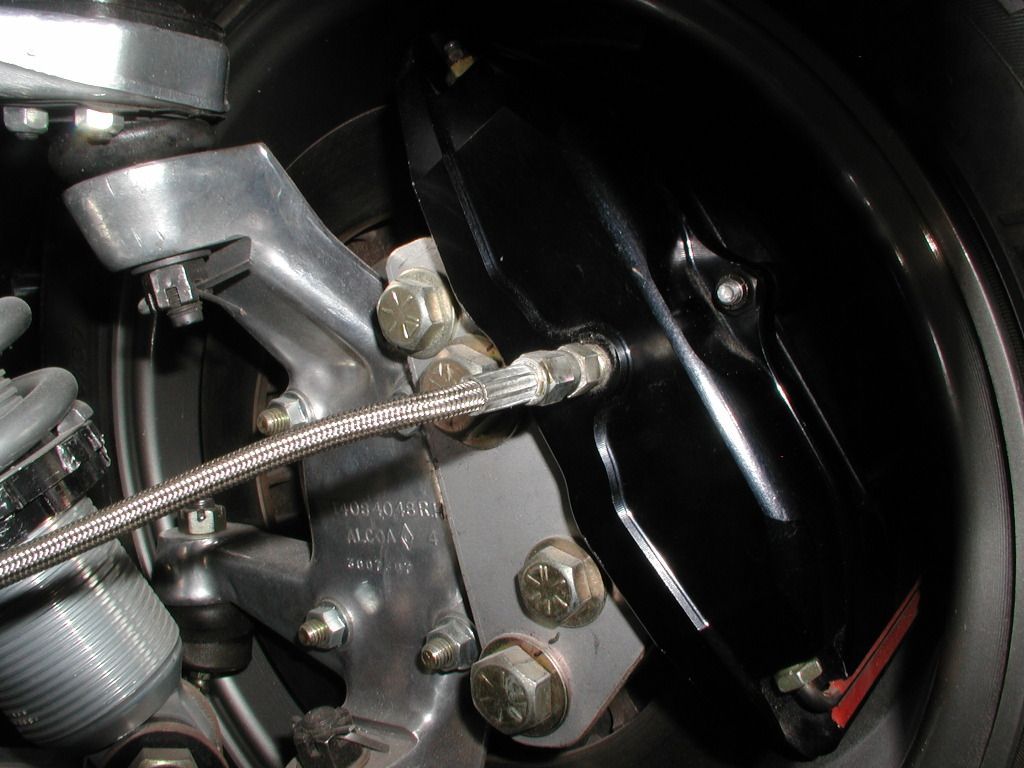Oil,
I am assuming you have calipers similar if not the same as mine.
To bleed them with the results you have given. Tighten up the bottom connector line.This should be tight unless you have taken them apart for some reason, but it sound as though you are leaking fluid here. If it is tight then you aren't bleeding them correctly. So here goes. Two ways to do it. By yourself or with a helper.
First, if you are doing this by yourself. You will need the following supplies.
1. A board that is long enough to push the pedal to the front panel and wedge it against something, the seat or the rear firewall, so it will keep the pedal against the panel, as seen here.
2. A brake bleeder kit such as this one.
3. Set it up like this. I am showing my rear wheel because the tire is off. The procedure is the same.
The tube to the caliper is the one that goes to the cap that has a tube that goes deep into the catch bottle.
Here are the steps if you have two master cylinders for front and back. Start with the rear wheel that is the greatest distance from the master cylinder.
1.Top off your brake reservoir to the rear brakes.
2. Put the bleeder tube to the outside caliper.
3. Open the valve that the bleeder tube is attached to.
4. Use the board to compress the brake pedal against the front panel or as far as the balance bar will let you go.
5. Close the bleed valve.
6. Release the board and allow the pedal to return to its normal position.
7 Repeat 3-6 several times. Don't allow the reservoir to run dry. Keep brake fluid in the reservoir. When done, tighten the valve closed.
Now go to the inside reservoir of that wheel and repeat the process. When finished go to the other rear wheel and do the same for it. Outside valve first, inside last.
When done with the rear wheels go to the front wheels. Choose the wheel furtherest from the master cylinder and repeat the process for the front wheels, of course selecting the front wheel reservoir.
If you set up the bleeder correctly it will eventually fill up and run back into the brake fluid jug. The cup is just to show you that your doing it correctly, and it keeps you from aspirating air back into the system if you screw up and leave the valve open when you release the pedal.
Try this procedure and then try out the brakes. They should give better performance. If you don't get better performance your balance bar may be off.
If you have a helper, the procedure is the same except you have someone that can compress the pedal for you.
Hope this helps you out.
Bill






